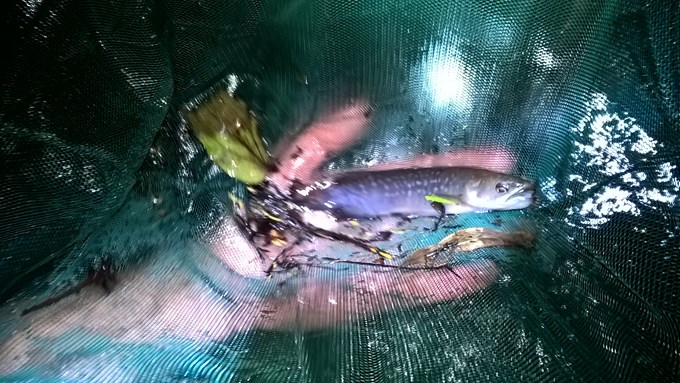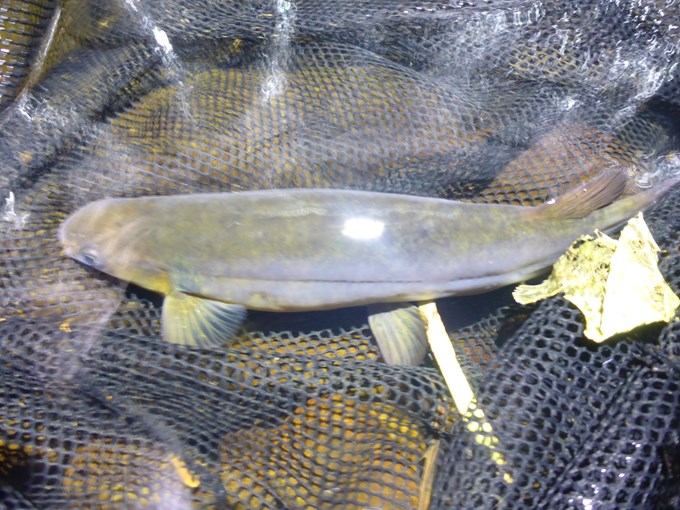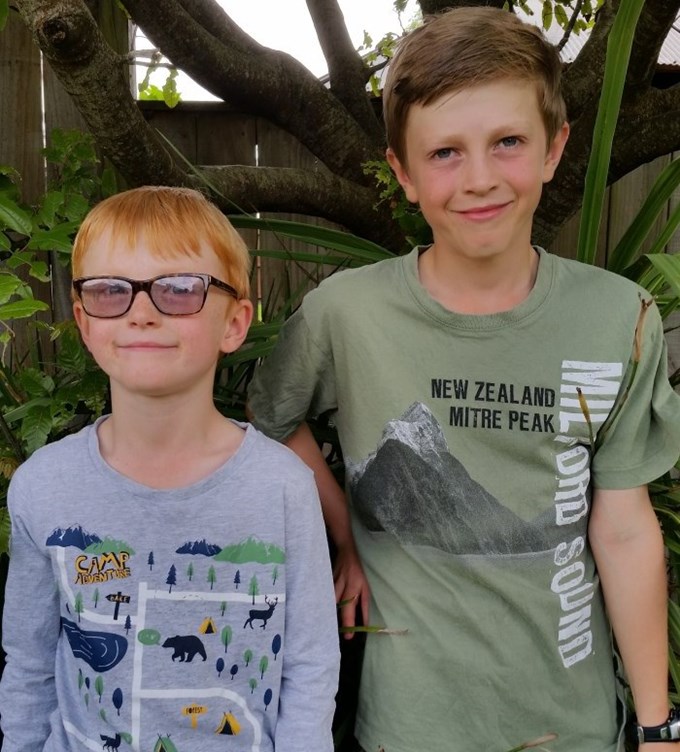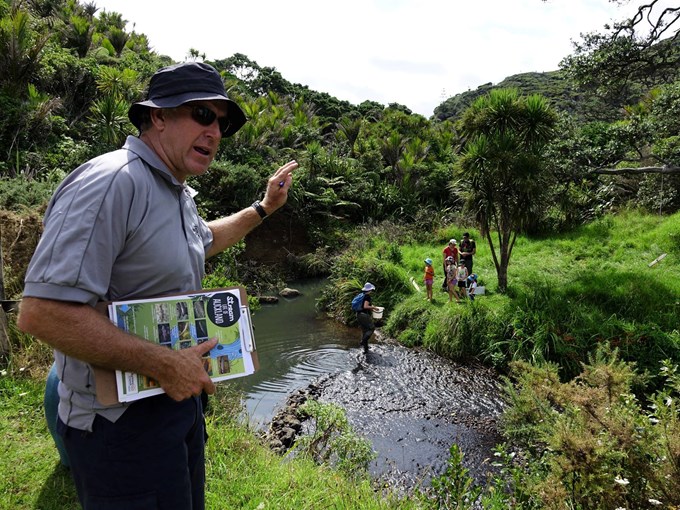Matthew Bloxham’s mission: helping our littlest creatures
As the council’s senior regional adviser for freshwater, Matthew spends a lot of time searching for Auckland’s native freshwater fish. This includes kōkopu, a forest-dwelling whitebait species.
Matthew's interest is in how native freshwater fish travel, use stream cover and how our urban and rural streams can be improved for aquatic life.
Auckland is home to five whitebait species – īnanga, banded kōkopu, shortjawed kōkopu, giant kōkopu and kōaro.
Because four out of the five species are in decline, or are naturally rare, locating these fish can be like finding a needle in a haystack.
Giving hope to species in decline
Their rarity was recently confirmed in a region-wide survey by the council that found the large majority of giant kōkopu populations have disappeared over the past two decades.
Īnanga school in large numbers, which makes them easier to track down. However, this species is also in decline, so the council is working with communities to find and protect little sections of streambanks where the species lives.
“The only species in Auckland not in decline is banded kōkopu,” Matthew explains. “Auckland’s small streams are great environments for banded kōkopu because they contain the small pools that the fish love."
"If we plant and shade the streams running through our backyards, enticing these handsome wee fish back into our urban streams is entirely achievable."

Working with Aucklanders
Trees provide so much of all that is good for kōkopu: cover, shade, stream structure and food.
The council’s Environmental Services work with communities to plant alongside streams, providing cover and strengthening streambank stability.
"If there’s one place kōkopu love to hide," Matthew says, “it’s in the cavities that form beneath streambanks and underneath submerged tree trunks and branches."
"The more stable we can make streambanks – by planting tree ferns at the edge of the channel for example – the more fish a stream can potentially support."
The rarest species are now largely restricted to remote streams in some of Auckland’s regional parks.
"However, as more cyclones and weather bombs arrive due to climate change even these streams can be utterly transformed and all aquatic life eliminated by floodwaters in a matter of hours."
Why kōkopu matter
“Most Kiwis associate kōkopu with the iconic whitebait fritter, but we have to start looking beyond fishing for them," Matthew says.
"Kōkopu are a good indicator of a healthy ecosystem, which is why they matter."
“If we find a stream with a diverse and thriving whitebait fishery, there’s an increased likelihood that the stream will be supporting other rare native fish species as well."
When only three or four native fish populations remain, you have to be prepared to use fresh approaches, he says.
Auckland Council is turning to specialist breeding facilities to produce giant kōkopu and shortjawed kōkopu. Fish reared in captivity will be introduced into catchments above Watercare dams in the Waitākere and Hunua Ranges to create additional populations, and a nest egg for the future.

How you can help
The community can play a big part in freshwater fish conservation too, says Matthew.
An entirely new population of giant kōkopu was recently discovered by two schoolboys, Zachary and Alexander Robertson, in a Greenhithe Stream.
Zachary and Alexander knew they had found something unusual the moment they laid eyes on the creature.
“The gold speckling on the fish’s dark back told me it wasn’t a banded kōkopu,” says Zachary.
The Robertson family has always taken a keen interest in nature and wildlife. But the find was still a great surprise.
Since the discovery, the family say they have seen their local stream in a new light. They often visit several times at night and have found all sorts of fish: kōaro, freshwater shrimp, eels and, of course, giant kōkopu. They have also seen glow worms along the stream banks.
Alexander, 7, is putting together a leaflet for the local community to encourage them to help conservation efforts in their area.
He says of the kōkopu experience: “We were going down to the stream to see an eel. I hopped onto the log to look under another log. Three minutes later I saw something under the other log that was spotty."
“I showed my brother, the tail moved. My brother said, 'that’s a giant kōkopu!' A week later we got photos to prove that it lives there as no one knew it did,” Alexander says.
Matt says the Roberston family’s discovery has created a lot of excitement in freshwater circles and will spawn a number of initiatives aimed at securing a future for the species in this catchment.

Follow the Biodiversity team online
To find out more about the Biodiversity team, check out their page on the Auckland Council website or follow the team on Facebook.
Read more: How to spot kōkopu


